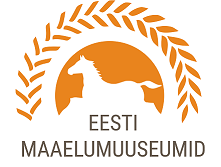The Estonian Agricultural Museum is actively working on creating a new two-part permanent exhibition ("Life Below and Above the Soil" and "Animal Welfare"). The titles of both exhibitions are still tentative, but it has been decided that they will form part of a future extensive permanent exhibition called the Rural Curiosity Centre, or MUHK, focusing on two specific themes. The process has reached the stage where the design and production of the exhibitions have been tendered, and a winner has been selected. The exhibitions will be created by Motor OÜ, a company known for many award-winning exhibitions.
The museum will begin designing and building a permanent exhibition on animal welfare in the large historic cattle barn at Ülenurme. Until now, only small animals have lived in the barn, and once a year, it has hosted large animals for the "Breeding Animal" exhibition. In 2025, a modern, engaging, and mobile exhibition will be added. The goal is to highlight the factors affecting the welfare of farm animals and their dependence on the methods of care applied. During the process, this exhibition is temporarily referred to as MUHK2.
Merlin Lumiste, the museum’s curator, explains the exhibition’s idea:
"When the environment takes into account the species-specific needs and conditions of animals, they feel well and stay healthy. A content animal helps reduce the need for medical resources and delivers clean, high-quality products to consumers. With the MUHK2 exhibition, we want to show what conditions are suitable for animals."
The new permanent exhibition at the main exhibition house in Ülenurme, tentatively named MUHK1, will focus on life both below and above the soil, particularly in terms of agricultural land use. Through games, interactive activities, and exciting visuals, the museum wants to emphasize to visitors that the amount of fertile soil, which is essential for life, is sadly decreasing for various reasons. To ensure high-quality food in the future, we must make wise decisions in how we manage our land. This exhibition is scheduled to be completed in 2026. The museum’s staff has been working seriously on the ideas for these exhibitions for almost two years. They have consulted with researchers from the Estonian Crop Research Institute (METK) and the Estonian University of Life Sciences and plan to continue collaborating with them. The complex brainstorming sessions and explorations of these topics resulted in the development of thorough concepts.
Aive Vahejõe, project leader and curator of the MUHK1 exhibition, explains:
"Maintaining the health and biodiversity of soils is one of the most important goals to ensure the sustainability of food production. Healthy soil provides better growing conditions for plants, which increases yields for farmers. Healthy plants also offer nutrient-rich, valuable feed for animals, which in turn enables the production of high-quality domestic food for consumers. Additionally, healthy, biodiverse soil is more resilient to climate change. The new exhibition environment, created as the Rural Curiosity Centre (MUHK), will help visitors understand how our everyday choices impact life both below and above the soil."
Ott Sarapuu, member of the board at Motor OÜ, the company producing the exhibitions, says:
"Our team is excited and ready to take on this new challenge. For the first time, we have involved an international partner in the project, the Danish design firm KvorningDesign, so we are eagerly anticipating both the collaboration and the results."
Arne Kvorning, head designer at KvorningDesign, is also excited about the upcoming creative process:
"It was great news to learn that we would be working with our partners Motor OÜ and Platvorm OÜ on the new exhibitions at the Estonian Agricultural Museum. I was born and raised on a small farm in Denmark, and I have fond childhood memories of rural life. At the same time, I experienced many of the challenges my family faced in running a small farm in an increasingly industrialized society while also focusing on climate change, sustainability, and ecology.
The topics of the upcoming MUHK exhibitions present both local and universal dilemmas and challenges. Telling these stories through modern scenography, integrated into the beautiful barns and stables of the Agricultural Museum, will require fine-tuning. We aim to create an aesthetic balance between the exhibition elements and effects, and the unique buildings, with their many original details and special atmosphere. We look forward to developing these concepts in creative collaboration with the museum team, Motor OÜ, and Platvorm OÜ."
The first meetings with partners have already taken place, working principles have been agreed upon, initial ideas have been discussed, and now the intensive work begins to bring the new exhibitions to the public.

